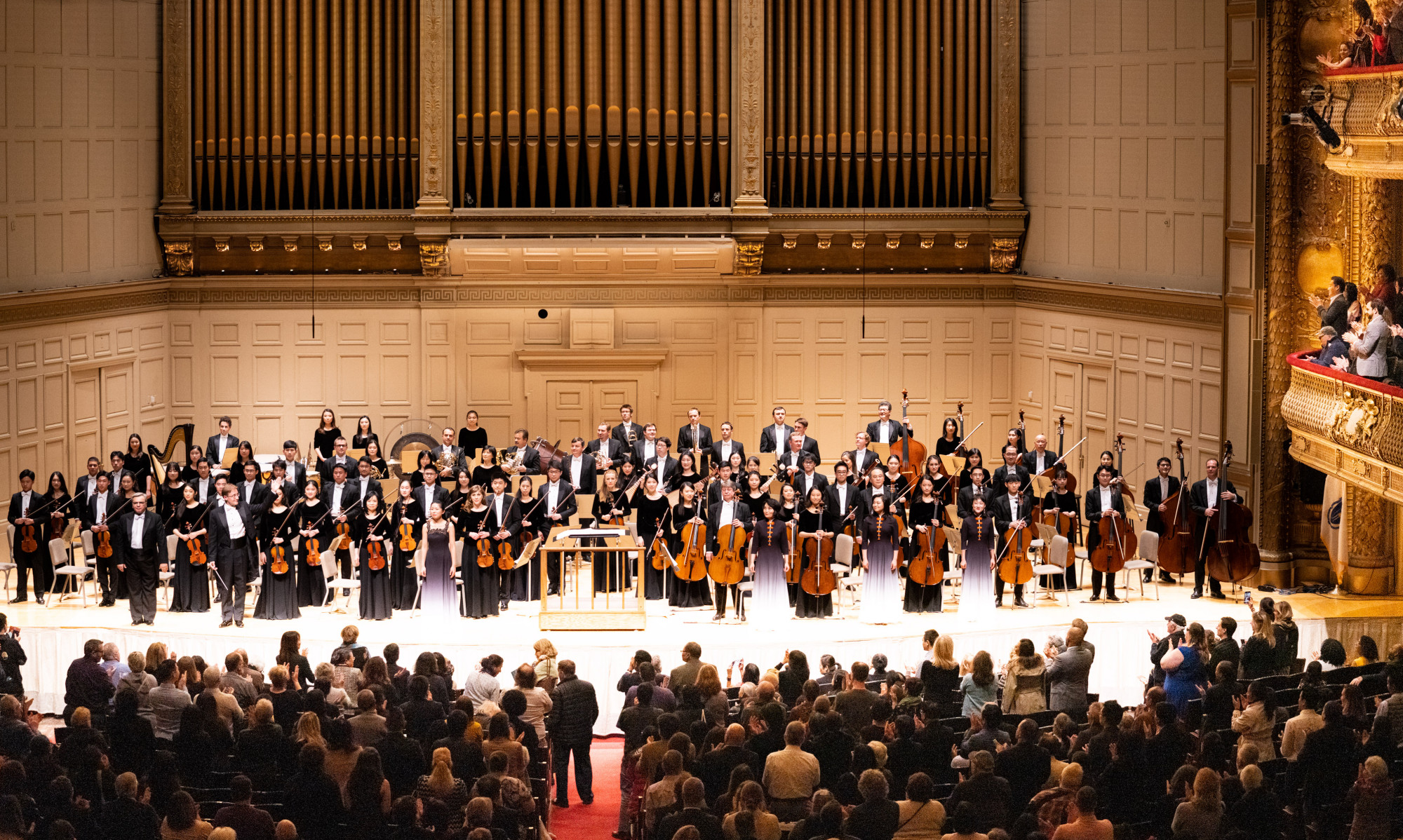Shen Yun Symphony Orchestra is returning to New York City for two performances on Oct. 22.
The orchestra, comprised of musicians from world-renowned Shen Yun Performing Arts, was formed in response to the high demand from audiences who wanted to hear more of Shen Yun’s music. Shen Yun is the world’s premier classical Chinese dance company, formed in New York in 2006 by artists from around the world.
Since 2012, the symphony orchestra has occasionally toured outside of Shen Yun’s half-year tour season.
The ensemble will only be performing one day, Sunday, Oct. 22, at 1 p.m. and 5 p.m. at David Geffen Hall in Lincoln Center, which reopened last year after a half-a-billion dollar renovation.
“I would say that in Shen Yun we are not just performing music, playing notes and tunes. We go deep inside the meaning of the music, even past the emotional side—most orchestras go to the emotional side, but we go beyond that—to illustrate the deeper meaning. It’s like a secret code inside the musical text that we bring out to the audience. It’s not necessary for them to understand the secret code, but the effect and the resonance is there,” said conductor Milen Nachev in an interview on the performing arts group’s blog.
East–West Harmony
Shen Yun Symphony Orchestra’s program every year includes a mix of original compositions—featuring Shen Yun’s unique East-West blend—as well as classical favorites like that of Beethoven and Tchaikovsky, demonstrating how classical music is truly a universal language, able to convey the essence of any culture.
A few select Chinese instruments, distinct and representative, are included in the ensemble. The pipa, a five-stringed Chinese lute, is known as the “king of instruments” and can be plucked or strummed to create a variety of effects. The bowed erhu has a famously wide range of expression, dynamics, and texture, and is sometimes said to be closest to the human voice, its two strings reflective of the human vocal chords. There are also Chinese percussion instruments included, but the orchestra is otherwise much like a standard symphony orchestra, albeit on the larger side.
In Shen Yun’s original compositions, ancient Chinese melodies are arranged to take advantage of the grandeur of a full orchestra, and the two classical music disciplines meld harmoniously.
Chinese music is not well-known in the West, and a common misconception is that the music is pentatonic, or written on a five-note scale.
Qin Yuan, a composer with Shen Yun, previously explained to The Epoch Times that ancient Chinese music was in fact composed in other ways.
“A lot of people think it’s based on a pentatonic scale, but it’s actually not. In ancient China, there were three scales most commonly used, but all three of these were seven-note scales,” Ms. Qin said. “They really used the same notes as the ones you find in Western classical music. But what’s different is how the notes are used and arranged; the musical rules are then entirely different.”
Traditional Chinese culture was said to be divinely inspired, and centered around the idea of harmony between heaven, earth, and humankind. All of its arts, including the music Shen Yun has inherited, reflect these values.
“It’s probably the best day of my life,” said Charles Terry, who attended a Shen Yun Symphony Orchestra performance in Costa Mesa, California, for his birthday.
“Very uplifting, it makes you feel good,” said Mark Brauer, another concertgoer in California. “It is very moving. I am a little embarrassed to say this I actually cried a little bit.”
“You could feel the emotion they were eliciting from each of the pieces,” said Tracey Moretz, who attended a performance in Houston. “For instance, the ‘Divine Compassion’ piece at the end, you could really feel the compassion that was being evoked.”
“This is real music,” said Ernest Torres, who had attended a Carnegie Hall performance. “It’s a beautiful feeling I can’t describe. I feel alive, I feel better. It’s amazing.”
Marta Tereshchenko, a classical pianist, spoke highly of the original pieces she heard at Carnegie Hall.
“The Chinese music of this kind that I heard today is more than elevating. It just cleans your mind,” she said.”It brings you good spirits.”
Programming
This year, conductors Milen Nachev and Li Xuan will lead the orchestra in performing the Butterfly Lovers Violin Concerto, the fourth movement of Dvorak’s Symphony No. 9, and Sibelius’s Finlandia.
Ms. Li will be conducting the Shen Yun Symphony Orchestra for the first time. Mr. Nachev, born in Bulgaria, served as principal conductor and music director of several major Eastern European orchestras, and his recordings have been regularly broadcast by the BBC and Radio France. He is now in his ninth season of performing with Shen Yun, and has led the orchestra in performances at Carnegie Hall, the Kennedy Center, Tokyo Opera City, and many other celebrated concert halls worldwide.
From The Epoch Times
